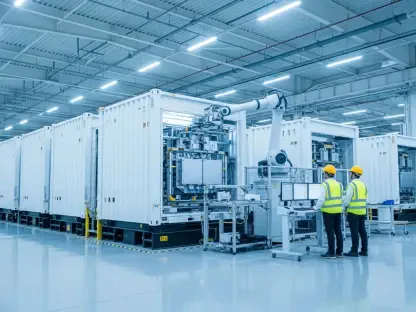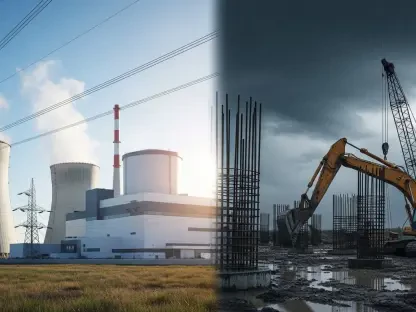Listen to the Article
There’s a breakdown happening beneath the surface of energy’s digital transformation. Not in generation or transmission—but in trust, the invisible backbone of modern energy markets.
As energy systems become smarter and more distributed, transactions move across decentralized markets, internet-of-things-enabled meters, algorithmic trading engines, and real-time settlement platforms. This evolution has increased efficiency, but at the cost of visibility, accountability, and auditability.
The result? A growing trust gap between what energy systems can do and what they can prove.
Enter blockchain—the technology often associated with cryptocurrency but poised to transform energy at its core.
This article explores the structural vulnerability plaguing digital energy transactions, how blockchain is emerging as a foundation for verifiable integrity, and why forward-looking energy firms are no longer treating it as a novelty but as infrastructure.
The Old Transaction Playbook Is Broken
Digital markets were meant to eliminate friction. Instead, they’ve multiplied it. The modern energy economy is now a dense network of:
Distributed energy resources: solar, wind, microgrids
Peer-to-peer (P2P) energy trading schemes
Dynamic pricing tethered to real-time demand
Virtual power plants and AI-optimized storage nodes
Every node adds actors—and every new actor introduces friction, latency, or risk.
Here’s the reality: A single megawatt-hour can pass through six or more intermediaries before billing closes. That journey spans jurisdictions, vendors, and platforms—each with its own data logic and reconciliation rules. Real-time trading collides with real-world latency.
The fallout? Settlement delays, credit misallocations, billing disputes, and liquidity risk rippling across already volatile grids. For renewables-heavy regions—where generation swings by the second—those delays are operational hazards.
Centralized Systems Are Built for Yesterday
Legacy energy management platforms were never designed to verify thousands of microtransactions per minute across a distributed market, because they falter in three critical ways:
Latency: Centralized clearinghouses slow down cross-border trades, emissions accounting, and multi-party validation.
Tampering risk: When one central server becomes the single source of truth, it also becomes a single point of failure.
Audit burden: Regulators demand precise lineage for renewable credits and carbon offsets. But when data is centralized and scattered across logs, proving the origin becomes expensive and reactive.
The verdict: Trust-through-centralization doesn’t scale.
Blockchain Brings Verifiability at the Edge
Blockchain reframes the trust problem. Instead of anchoring certainty in a central authority, it distributes it—cryptographically, transparently, and by design.
Its key advantages are:
Immutable records: Each transaction is hashed, time-stamped, and tamper-evident.
Smart contracts: Self-executing logic automates verification and settlement.
Provenance: Stakeholders can validate the source and attributes of every kilowatt-hour.
Real-world pilots are already proving the model. For example, consider Power Ledger in Australia: peer-to-peer energy trades logged in real time, with no double-counting and no reconciliation lag—just straight-through settlement.
Beyond innovation, that’s infrastructure that scales.
Smart Contracts Collapse Friction
Smart contracts dramatically reduce transactional friction by replacing multi-party validation steps with automated execution. The following table compares today’s manual process for renewable energy certificate trading with a future-state blockchain model, highlighting how automation eliminates latency and risk at every step.
Current Model (Manual Process) | Blockchain Model (Smart Contracts) |
Manual confirmation | Solar meter logs 100 MWh |
Clearinghouse validation | Data feeds a blockchain-based smart contract |
Counterparty approval | Smart contract auto-validates against preset rules |
Third-party settlement | Payment and certificate issuance triggered autonomously |
Outcome: High friction, added latency, and risk at each step | Outcome: Automated, transparent, low-friction transaction |
The bottom line: Blockchain eliminates human bottlenecks, turning settlement from a week-long process into a real-time event.
Cybersecurity and System Resilience
Attackers go where the central nodes are. In fact, IBM’s X-Force reported a 67% surge in cyberattacks targeting energy firms in 2024, with centralized data silos topping the hit list.
Blockchain shifts the cost curve through:
Decentralization: No single node to compromise.
Cryptographic integrity: Tampering becomes computationally prohibitive.
Permissioned access: Only verified entities can validate or write transactions.
That doesn’t mean blockchain makes systems impenetrable—but it radically shifts the attacker’s cost-to-impact ratio. In the energy world, that’s resilience by design.
Interoperability: The Achilles Heel of Blockchain Adoption
To be clear: blockchain isn’t plug-and-play. The energy ecosystem includes utilities, generators, retailers, aggregators, and regulators—all using different formats and business logic. Without interoperability, blockchain introduces new silos instead of solving them.
Initiatives like Energy Web Chain are changing that by creating sector-specific blockchains with modular interfaces that allow for secure data sharing between independent systems.
Regulatory Friction or Opportunity?
No discussion of energy infrastructure is complete without compliance.
Regulators are no longer passive observers. They’re actively shaping how blockchain is tested and applied.
The European Union has piloted blockchain-based Guarantees of Origin to verify renewable energy claims.
The U.S. Department of Energy has explored blockchain for critical infrastructure tracking and grid resilience reporting.
The value is clear: Blockchain enables real-time, auditable reporting that reduces regulatory overhead while improving transparency.
But this only works if blockchains are designed with governance and accountability in mind, as first principles.
Scaling for Market Load
To address the elephant in the room: Can blockchain handle the energy sector’s volume?
Public blockchains like Ethereum max out at ~ 15 transactions per second—hardly enough for grid-scale operations. But scalable adoption is possible through:
Layer 2 solutions that process transactions off-chain before anchoring to the main chain
Permissioned blockchains that trade decentralization for throughput and control
Hybrid models that combine blockchain-based settlement with traditional telemetry systems
Shell, for example, is deploying private ledgers to track renewable energy transactions efficiently while maintaining regulatory-grade traceability. Scalability is a design decision.
What the Leaders Are Doing Differently
The most advanced energy players aren’t waiting for standards—they’re building around them.
Here’s how forward-looking firms are integrating blockchain today:
Digital identity for infrastructure: Assigning cryptographic tags to turbines, meters, and batteries for traceability
Tokenization of credits: Turning renewable energy certificates into digital assets for faster, fractional trading
Blockchain-based demand response: Using smart contracts to reward consumers for grid-balancing actions in real time
Iberdrola, for example, has begun a pilot project using blockchain to guarantee, in real time, that the energy supplied and consumed is 100% renewable, thus strengthening the credibility of its environmental and ESG commitments.
That’s competitive insurance.
What Trust at Scale Really Looks Like
In energy, trust is infrastructure. Markets move faster. Consumers demand transparency. Regulators expect proof, and legacy systems, no matter how well-patched, can’t deliver trust at that velocity.
Blockchain enables a new operating model where:
Trust is embedded into the transaction layer
Verification is real-time and automatic
Data integrity is baked into architecture
It’s not a silver bullet, but a structural shift toward an energy economy that is provable by design.
Scale with Proof
Energy is moving faster than ever. Consumers demand transparency, and regulators expect proof. Centralized trust models, no matter how patched, can’t deliver at this velocity.
Blockchain offers more than a feature—it’s a structural shift:
Trust embedded at the edge.
Verification automated at the source.
Integrity engineered into every transaction.
A foundational layer for an energy economy that is provable by design.
So ask: Is your digital infrastructure ready for trust at scale—or are you still betting your grid on “good enough”?









